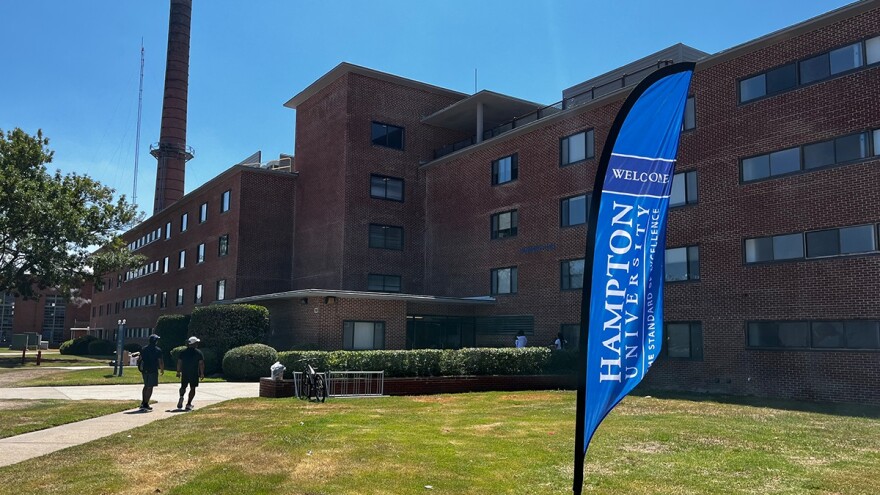On a warm day at the end of August, hundreds of new Hampton University students lugged clothes and bedding up to their dorm rooms.
Incoming freshman Keziah Harris came all the way from Scottsdale, Ariz., to study biology.
She passed up places like University of Hawaii in part because Hampton felt like home.
“Coming from a school where it was all white, basically, and just transitioning to here, it was just really nice to be surrounded by my own people,” Harris said. “(To) be more involved in my culture and just really give, you know, just give me a chance just to open up.”
Harris is part of a growing group of young Black students increasingly interested in historically Black colleges and universities.
For decades, those same students shifted away from the schools, known as HBCUs.
In 1976, 18% of all Black college students attended HBCUs. By 2014, that number had dropped to 8%.
But between 2010 and 2020, there was a 30% increase in applications to historically Black colleges and universities. Hampton saw a 13% increase in applications just between 2019 and 2020.
Nadrea Njoku heads the Frederick D. Patterson Research Institute, part of the United Negro College Fund.
She said the HBCU enrollment decline started when schools desegregated and Black students had more options.
But today, as fewer people are applying to and attending college overall, interest in HBCUs has ticked back up.
“Whenever there is doubt on the future of our community in America, we're kind of rattled or shaken. We always turn back to what we know and we've known HBCUs,” Njoku said. “Students are finding a deeper sense of value in the community at these institutions.”
Many have pointed to the Black Lives Matter Movement, and particularly the 2020 protests in the wake of George Floyd’s murder, as reasons for the application boost.
Njoku said that’s playing a part, but the renewed interest in HBCUs didn’t start in 2020. She said it’s been ticking up since 2015, when students at the University of Missouri gained widespread attention for protesting conditions on that HBCU campus.
Njoku says it’s also not just one thing attracting the new generation to HBCUs.
There are also dedicated financial resources available to students who attend HBCUs that help alleviate college debt issues.
HBCUs have also historically not been able to afford the big marketing push that predominantly white institutions have often employed.
Njoku said social media provides a kind of advertising for campus life, reaching a much wider audience than HBCUs could have afforded to reach before the rise of Instagram or Twitter.
“The students are able to preview firsthand what they're going to experience on the college campus from student athletics, a band culture, student programing opportunities,” Njoku said. “They see the videos, the photos. And they want a piece of that action.”


